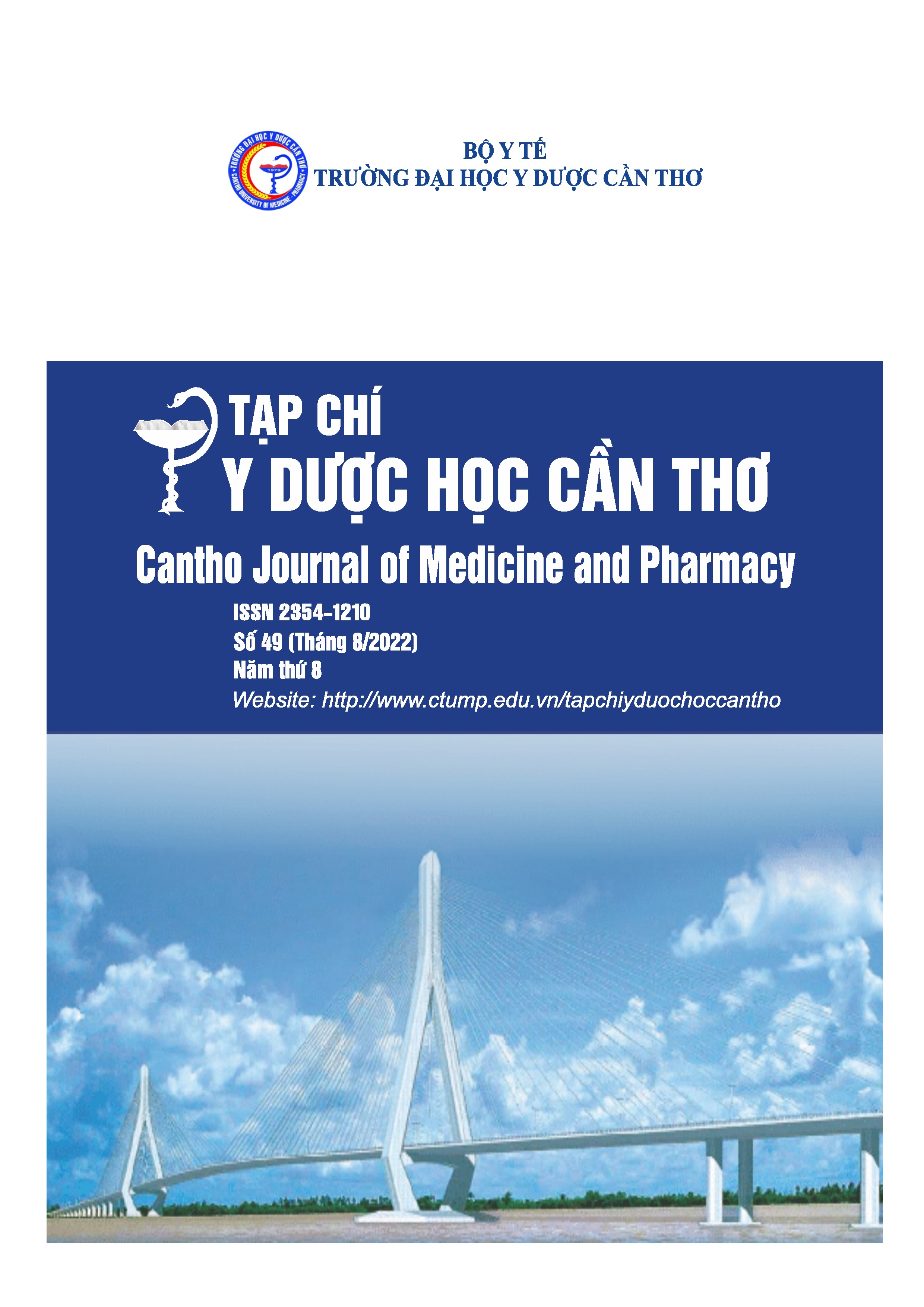CLINICAL AND SUBCLINICAL CHARACTERISTICS OF PATIENTS WITH ACUTE CORONARY SYNDROME AT TRA VINH GENERAL HOSPITAL
Main Article Content
Abstract
Background: Acute coronary syndrome is a heterogeneous group of diseases that requires a risk stratification, especially in the first 24-48 hours of admission to have an appropriate treatment. Observations from clinical practice will inevitably gain more useful information, thereby proposing more effective interventions. Objectives: To describe the clinical and subclinical characteristics of acute coronary syndrome on patients hospitalized at Tra Vinh General Hospital. Materials and methods: Data were collected in the cross-sectional study carried out from March to September 2020 on 121 patients diagnosed with acute coronary syndrome at Tra Vinh General Hospital. Results: Angina was the most common symptoms on patients with acute coronary syndrome (80.3%), while dyspnea and tachycardia (≥ 100 times/min) were 65.8% and 35.5%, respectively, and moist rale in lungs was 26.1%. More than 40% of patients in the study group had Killip classes III and IV. The research applied GRACE (Global Registry of Acute Coronary Events) scale for stratifying. Most patients (90.1%) belonged to high-risk group, which was significantly higher than intermediate and low-risk groups with 7.9% and 2.0%, respectively. Non-ST elevation myocardial infarction (NSTEMI) accounted for a higher percentage than ST elevation myocardial infarction (STEMI) 62.8% versus 37.2%. In which, there were 44.6% of patients having anterior myocardial infarction. Patients with elevated Troponin I was high with 83.5%. The results of echocardiography recorded 18.2% of patients with movement disorders, 9.1% heart failure with reduced ejection fraction, 32.7% with acute mitral regurgitation after infarction, and 32.7% with diastolic dysfunction. Conclusions: The common symptoms of acute coronary syndrome was angina, dyspnea and tachycardia. The rate of having NSTEMI was significantly higher than STEMI. In addition, the majority of patients with acute coronary syndrome fell into the high - risk group on the GRACE scale.
Article Details
Keywords
Acute coronary syndrome, GRACE scale, Killip resolution
References
2. Bùi Hữu Minh Trí, (2011), “Phân tầng nguy cơ, điều trị chống huyết khối và chỉ định can thiệp mạch vành trong hội chứng vành cấp”, Kỷ yếu báo cáo khoa học hội nghị KHKT BV An Giang 2011.
3. Châu Văn Vinh, Hồ Thượng Dũng, Đoàn Văn Đệ (2017), “Đặc điểm lâm sàng, cận lâm sàng và tổn thương động mạch vành ở bệnh nhân nhồi máu cơ tim cấp thành dưới tại bệnh viện Thống Nhất”, Chuyên đề tim mạch học.
4. Phạm Nguyễn Vinh và cộng sự (2011), “Nghiên cứu quan sát điều trị bệnh nhân nhập viện do hội chứng mạch vành cấp”, Tạp chí Tim Mạch học Việt Nam, số 58, tr.12-25.
5. Abu-Assi E, Ferreira-González I, Ribera A, et al. (2010), “Do GRACE (Global Registry of Acute Coronary events) risk scores still maintain their performance for predicting mortality in the era of contemporary management of acute coronary syndromes?”, Am Heart J, 160 (5), pp.826834.e821-823.
6. Anderson J L, Adams C D, Antman E M, et al. (2007), “ACC/AHA 2007 guidelines for the management of patients with unstable angina/non ST-elevation myocardial infarction: a report of the American College of Cardiology/American Heart Association Task Force on Practice Guidelines (Writing Committee to Revise the 2002 Guidelines for the Management of Patients With Unstable Angina/Non ST-Elevation Myocardial Infarction): developed in collaboration with the American College of Emergency Physicians, the Society for Cardiovascular Angiography and Interventions, and the Society of Thoracic Surgeons: endorsed by the American Association of Cardiovascular and Pulmonary Rehabilitation and the Society for Academic Emergency Medicine”, Circulation, 116 (7), pp. e148-304.
7. Antman E M, Cohen M, Bernink P J, et al. (2000), “The TIMI risk score for unstable angina/nonST elevation MI: A method for prognostication and therapeutic decision making”, Jama, 284(7), pp.835-842.
8. Carruthers K F, Dabbous O H, Flather M D, et al. (2005), “Contemporary management of acute coronary syndromes: does the practice match the evidence? The global registry of acute coronary events (GRACE)”, Heart, 91(3), pp.290-298.
9. Correia L C L, Garcia G, Kalil F, et al. (2014), “Prognostic value of TIMI score versus GRACE score in ST-segment elevation myocardial infarction”, Arquivos brasileiros de cardiologia, 103(2), pp.98-106.
10. Gao R, Patel A, Gao W, et al. (2008), “Prospective observational study of acute coronary syndromes in China: practice patterns and outcomes”, Heart, 94(5), pp.554-560.
11. Granger C B, Goldberg R J, Dabbous O, et al. (2003), “Predictors of hospital mortality in the global registry of acute coronary events”, Arch Intern Med, 163(19), pp.2345-2353.
12. Patrick T. O’Gara, Frederick G. Kushner, Deborah D. Ascheim, et al. (2013), “2013 ACCF/AHA Guideline for the Management of ST-Elevation Myocardial Infarction”, Circulation, 127(4), pp.e362-e425.
13. Steg P G, Goldberg R J, Gore J M, et al. (2002), “Baseline characteristics, management practices, and in-hospital outcomes of patients hospitalized with acute coronary syndromes in the Global Registry of Acute Coronary Events (GRACE)”, Am J Cardiol, 90(4), pp.358-363.


